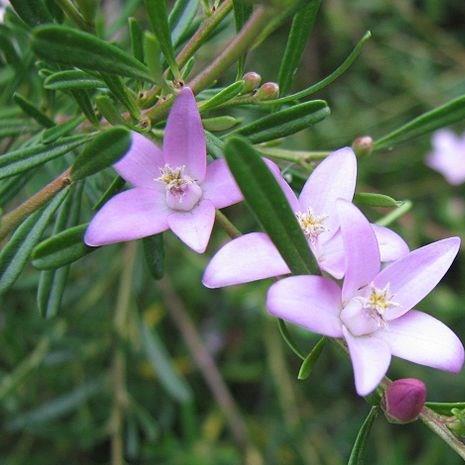
Crowea species
Waxflower
Crowea - or 'Waxflower' is native to Australia. It is a popular ornamental shrub with attractive pink or white, star-shaped flowers, mainly from late summer to mid-winter, and evergreen leaves that release a bitter scent when bruised.. They are hardy, moderately tolerant of frost, growing best in a rich, well-drained soil in partial shade. Propagation is easiest from cuttings.
Contributed by @ranster
-
Partial shade
-
Occasional watering
-
Frost Hardy: 23F (-5°C)
-
Rich and free draining
Common name
Waxflower
Latin name
Crowea species
type
Evergreen Shrub
family
Rutaceae
ph
5.0 - 7.0 Acid - Neutral
Plant & bloom calendar
-
Best time to plant
full grown dimensions
 0.70 M
1.00 M
0.70 M
1.00 M
Crowea species
Crowea - or 'Waxflower' is native to Australia. It is a popular ornamental shrub with attractive pink or white, star-shaped flowers, mainly from late summer to mid-winter, and evergreen leaves that release a bitter scent when bruised.. They are hardy, moderately tolerant of frost, growing best in a rich, well-drained soil in partial shade. Propagation is easiest from cuttings.
Propagation by cuttings
From Early Summer TO Mid Autumn
Propagation by cuttings is easy using tip growth (which is very soft in character), at a half-ripe stage.
Planting young plants
From Early Spring TO Early Spring
Crowea should be planted in a well drained, fairly rich, lime-free soil. It prefers a some shady position. In partial shade, the soil around the base of the plant should be shaded in some way from hot sun. This can be achieved by surrounding the plant with up to 10 cm of well rotted compost or a good mulch derived from organic material.











